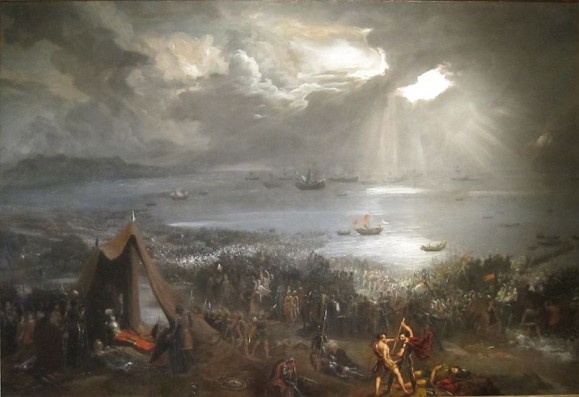A grudge rebellion or the medieval equivalent of the 1916 Rising? The world’s leading authorities on the Battle of Clontarf gathered in Trinity College Dublin on April 11, 2014 in a bid to establish the truth of what really happened at the battle as part of a major international conference to mark the 1000th anniversary of the conflict and the death of Brían Boru. A new website featuring interactive maps of the battle was also launched at the conference.
There are few more emblematic dates in Irish history than that of the Battle of Clontarf, fought on Good Friday, 1014, when the high-king Brían Boru lost his life in the hour of victory against his Scandinavian and Irish foes. Traditional interpretations remember the battle as the medieval equivalent of 1916 with Brían as the martyr hero who led his people to victory over their would-be heathen conquerors on Good Friday. But more recent interpretations have favored the view that the battle was little more than the culmination of a rebellion against Brían, the king of Munster, by the insubordinate king of Leinster and his Dublin associates.
Entitled Clontarf 1014-2014, the 16th Medieval Dublin Symposium organized by Trinity’s Department of History in partnership with Dublin City Council aimed to re-evaluate the role of Brían Boru in the light of the latest cutting-edge research including a reinvestigation of Brían’s ancestry to see where he fits into the DNA of the nation. The symposium also highlighted recent research on the subject of the high-kingship of Ireland and of the role of the Vikings in medieval Ireland.
The Truth of the Battle of Clontarf

"Battle of Clontarf" but Hugh Frazer, 1826. Photo: Isaacs Art Center, public domain

Leave a Reply